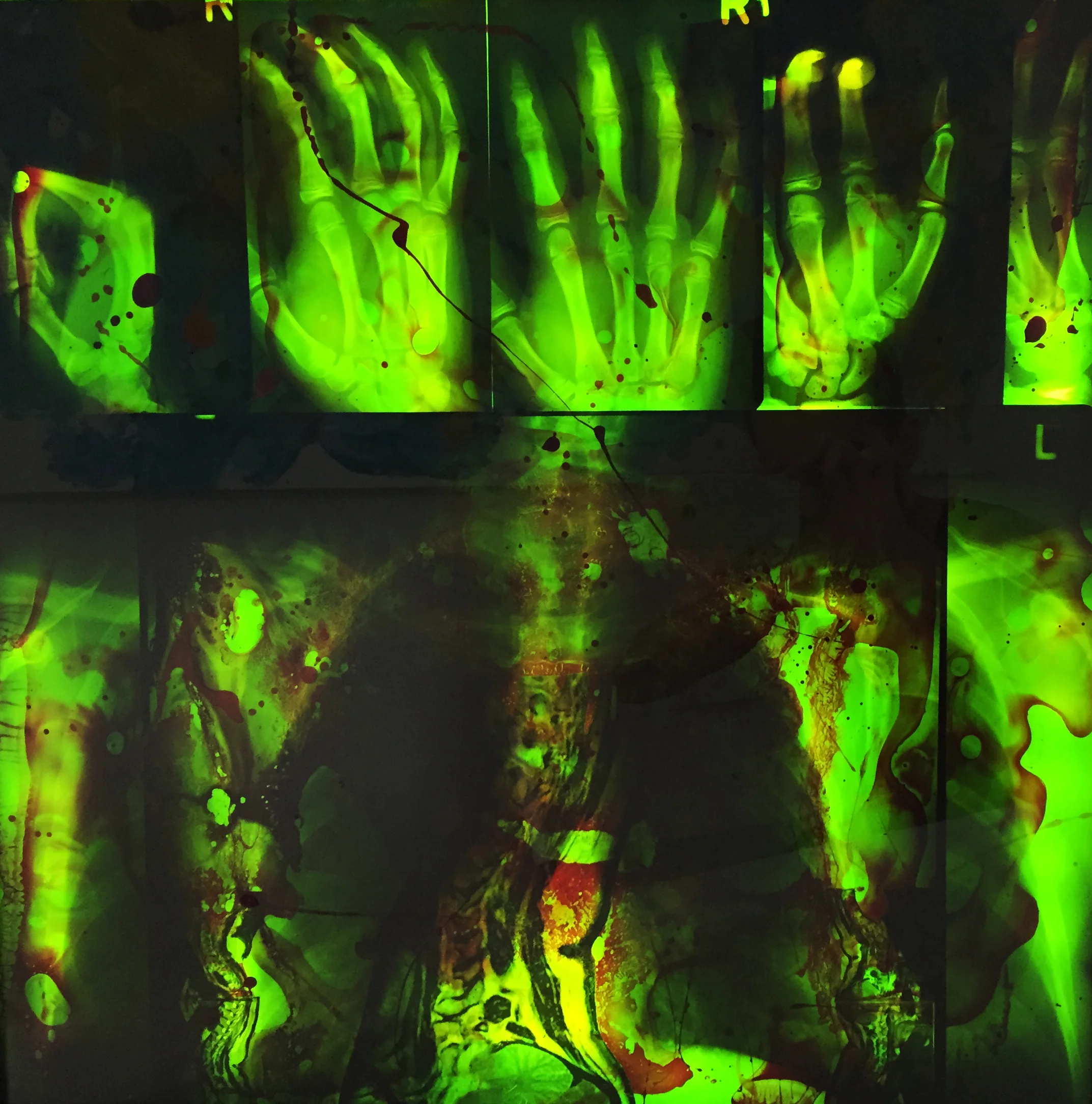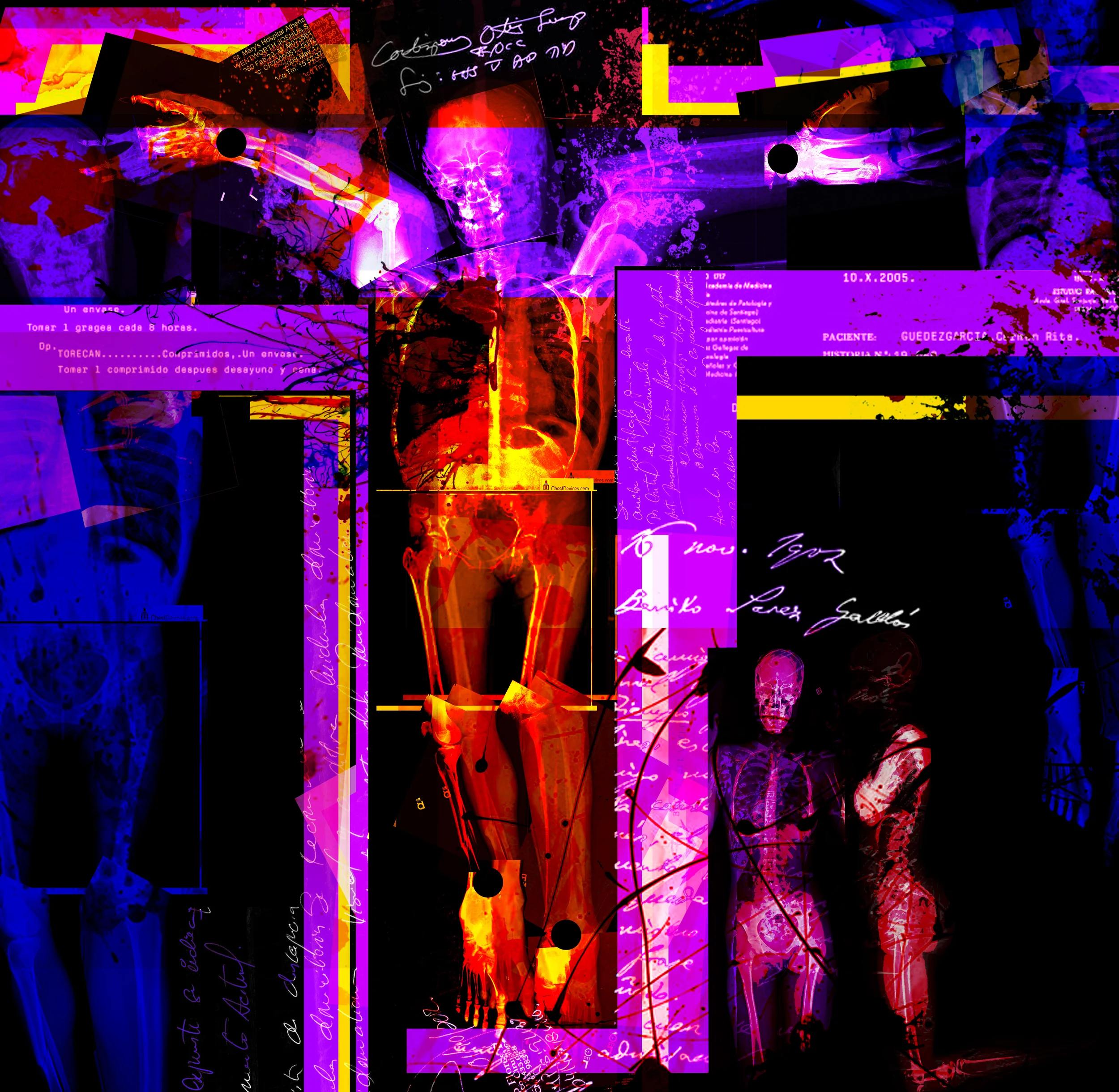Dystopia is an undesirable fictitious society itself. This dystopian society tends to be introduced through a novel, essay, comic or movie, in my case through the Visual Arts, at the same time taking advantage of recycled material of any kind that may arise from medical use. Intervening, generating and forming them part of an artistic piece.
The concept of "dystopia" comes from the Anglo-Saxon culture. In terms of etymology, the term was coined from the terms of the ancient Greek (dis) "bad" and "place, landscape, scene". According to the Oxford English Dictionary, the term was coined - do at the end of the 19th century by John Stuart Mill, who also used the synonym created by Bentham cacotopia, from the adjective (kako) "evil". Both terms were based on the utopia term coined by Tom·s Moro (ef) from 'no', meaning 'a place that does not exist' and whose use are in terms of perfect or ideal societies.
Dystopia or cacotopia are antonyms utopia terms meaning a 'negative utopia', where reality takes place in antithetical terms to an ideal society, repre - laying a hypothetical society undesirable.
The name of my project is: Paint by Pain a universal idea of seeking the excitement of painting materials whose background is painful as it is the diagnostco of a disease or the long road to a cure. Here's my plan - lie of art as a disease, which we should suffer all, trying to touch the sensitivity of everyone, and recycling elements of the medical history. My idea is never take the situation of each patient or former, unlike as in ma, collect their vivid pain and transform it with humility in an aesthetic and artistic piece, but with the strength of awareness, recycling the pain and which Alchemist transforming it into pieces of art, able to reach any person and at the same time generate awareness about diseases and medical praxis, in the same way the eternal and constant search for recycling-laje in all its forms.
My dystopian society, was born through a small writing, on the approach of art in all its forms as a disease, and in turn the everyday society elements as a 'cure', hence the slogan: "Art has no cure".
I've said here written: today art is a virus the art today is a latent, but unfortunately passive virus, circulates our blood, as if the public mass carrier of the largest epidemic of all time - pos, but. . . Why are so hidden?, why today the vast majority live without showing a single symptom?, what these multiple cases of immunity are due to artistic diseases?, thanks to what, the inert mass follows its course without suffering pains in ni - cough of sublime divinity of art?. . . Thanks to aberrant antidotes taking in every microsecond in multi-sensory ways: analgesic tablets against the sweet acidity of desvariante poetry, capsules antiin matorias for your eardrums higher by light melodic (fallen angels music), Cruets to placate the enigmatic images of the unconscious in nito in erotic forms, tablets for theatrical arthritis led to a wooden Orgasmic Sun, the ema multicoloured expectorant syrups of pince them - burning, severe and frenzied ladas of painting; ointments for overflowing chest of dreams. What heinous this rotten recipe issued by the worst political medical society, directed toward the most ignorant, insensitive and therefore useless beings.
Beyond them "healthy" living. I desire that this virus Woodworm each organ of human beings. Let yourself be overcome by this disease, obviously very be-teaching disease. I say goodbye saying yesterday, today and forever: sick of art, and dying art.
José De Bastos
Some references of dystopian societies: in the literature: the five hundred million of the Begum of Julio Verne (1879), the time machine, of H. G. Wells (1895), Scarlet, Jack London (1912) plague, zero and the in nito, of Arthur Koestler (1940), animal farm, by George Orwell (1945), sinister, by Vladimir Nabokov (1947) band, 1984, by George Orwell (1949)Limbo, of Bernard Wolfe (1952), Clockwork Orange, Anthony Burgess (1962), do dream electric sheep androids?, by Philip K. Dick (1968), disobedience, AntÛn Lopo (2011), Maze Runner: La cure Mortal, of James Dashner.
At the cinema: Metropolis by Fritz Lang (1927), La jetÈe, Chris Marker (1962), the Lord of the flies (1963), Peter Brook, Clockwork Orange, Stanley Kubrick (1971), based on the eponymous novel by Anthony Burgess, Brazil, Terry Gilliam (1985), 28 days later (28 later days), Danny Boyle. (2002), v for Vendetta, James McTeigue (2006) based on the eponymous comic of Alan Moore and David Lloyd, WALL∑E, Andrew Stanton (2008), the hunger games, based on the novels by Suzanne Collins. (2012).
VIDEO ART ( VISUALS )
















